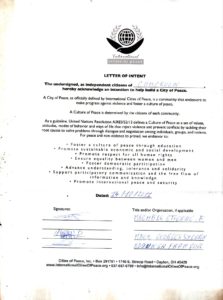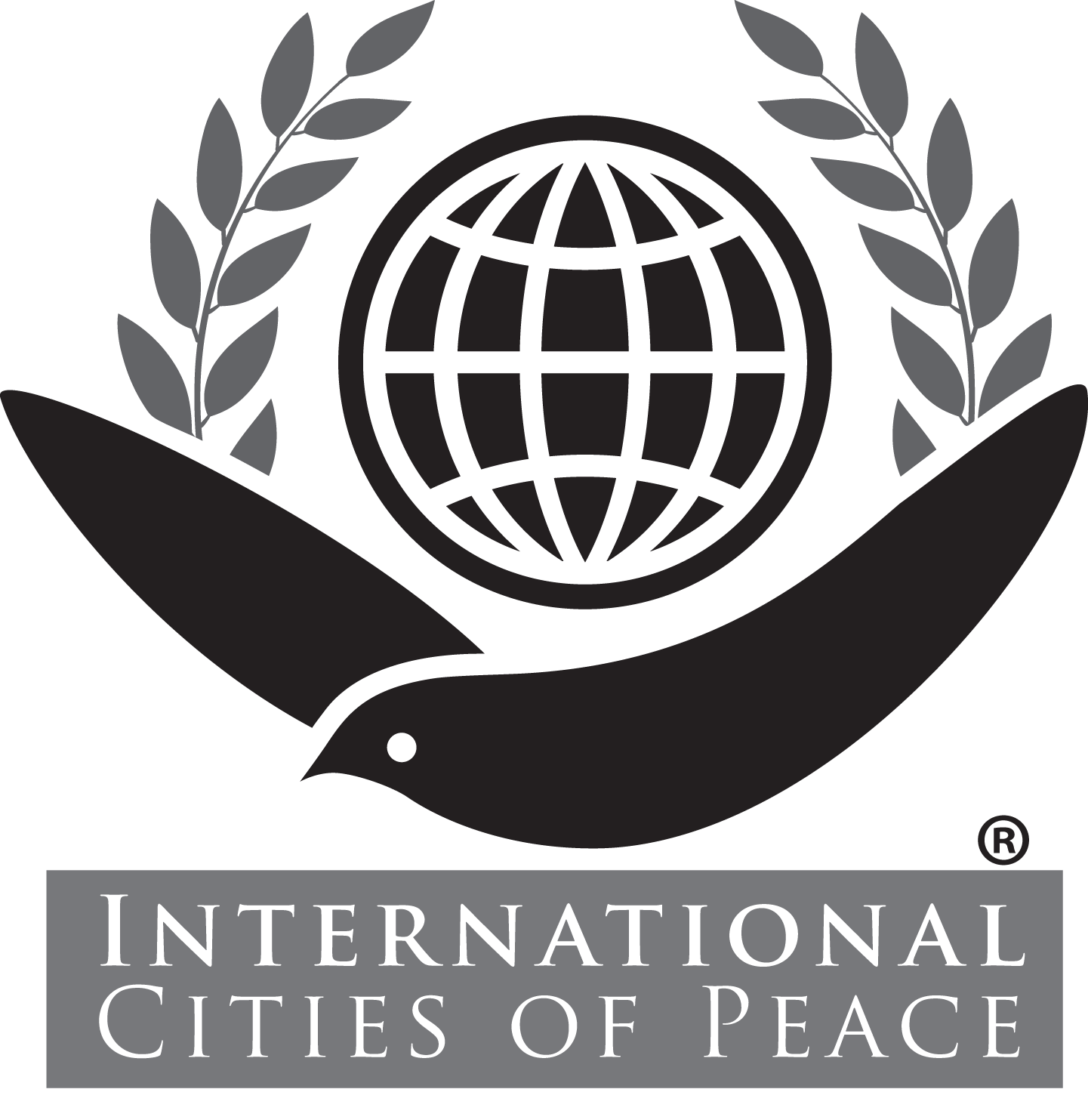Yaounde, Cameroon: City of Peace
Welcome Etienne Francis Maemble, leader of the Yaounde inititive and liaison for Cameroon!
Note: Introduction page with information primarily at the time of joining International Cities of Peace. For updates, please contact the liaison.
Writes Etienne: “As a liaison and representative of your organization in Cameroon, I would like to inform you of new developments in the Cameroon group and our projects to build a solid foundation in Cameroon. I have a group of 10 young people motivated to build peace and non violence in Cameroon through our association cities of peace. Our projects are:
1-to acknowledge our association with the government
2-open an office or a peace center with a library and a small museum of peace with a small media center when young peopleand interested can find documentation and learn about peace initiatives around the world, our programs and activities.
3- build a website: cities of peace Cameroon.
4-make announcements over the media in Cameroon about what we do, make new members.
5-Contact churches and religions of Cameroon to work in partnership with them.
Contact the institutions of peace national and international peace to work in partnership.
6-involve the government in our actions to support.”

Letter of Intent
About Cameroon (from Wikipedia):
Cameroon, officially the Republic of Cameroon (French: République du Cameroun), is a country in west Central Africa. It is bordered by Nigeria to the west; Chad to the northeast; the Central African Republic to the east; and Equatorial Guinea, Gabon, and the Republic of the Congo to the south. Cameroon’s coastline lies on the Bight of Bonny, part of the Gulf of Guinea and the Atlantic Ocean. The country is called “Africa in miniature” for its geological and cultural diversity. Natural features include beaches, deserts, mountains, rainforests, and savannas.
Early inhabitants of the territory included the Sao civilisation around Lake Chad and the Baka hunter-gatherers in the southeastern rainforest. Portuguese explorers reached the coast in the 15th century and named the area Rio dos Camarões (“River of Prawns”), the name from which Cameroon derives. Fulani[5] soldiers founded the Adamawa Emirate in the north in the 19th century, and various ethnic groups of the west and northwest established powerful chiefdoms and fondoms. Cameroon became a German colony in 1884.
After World War I, the territory was divided between France and Britain as League of Nations mandates. The Union des Populations du Cameroun political party advocated independence but was outlawed by France in the 1950s. It waged war on French and UPC militant forces until 1971. In 1960, the French administered part of Cameroon became independent as the Republic of Cameroun under President Ahmadou Ahidjo. The southern part of British Cameroons merged with it in 1961 to form the Federal Republic of Cameroon. The country was renamed the United Republic of Cameroon in 1972 and the Republic of Cameroon in 1984.
Compared to other African countries, Cameroon enjoys relatively high political and social stability. This has permitted the development of agriculture, roads, railways, and large petroleum and timber industries. Nevertheless, large numbers of Cameroonians live in poverty as subsistence farmers. Power lies firmly in the hands of the authoritarian president since 1982, Paul Biya, and his Cameroon People’s Democratic Movement party. The English speaking territories of Cameroon have grown increasingly alienated from the government, and politicians from those regions have called for greater decentralization and even the secession (for example: the Southern Cameroons National Council) of the former British-governed territories.
DO YOU THINK YOUR COMMUNITY CAN BE A CITY OF PEACE? SEND AN EMAIL!
Note: If information or photos used here are copyrighted, please contact us and we will immediately delete the copyrighted material.
